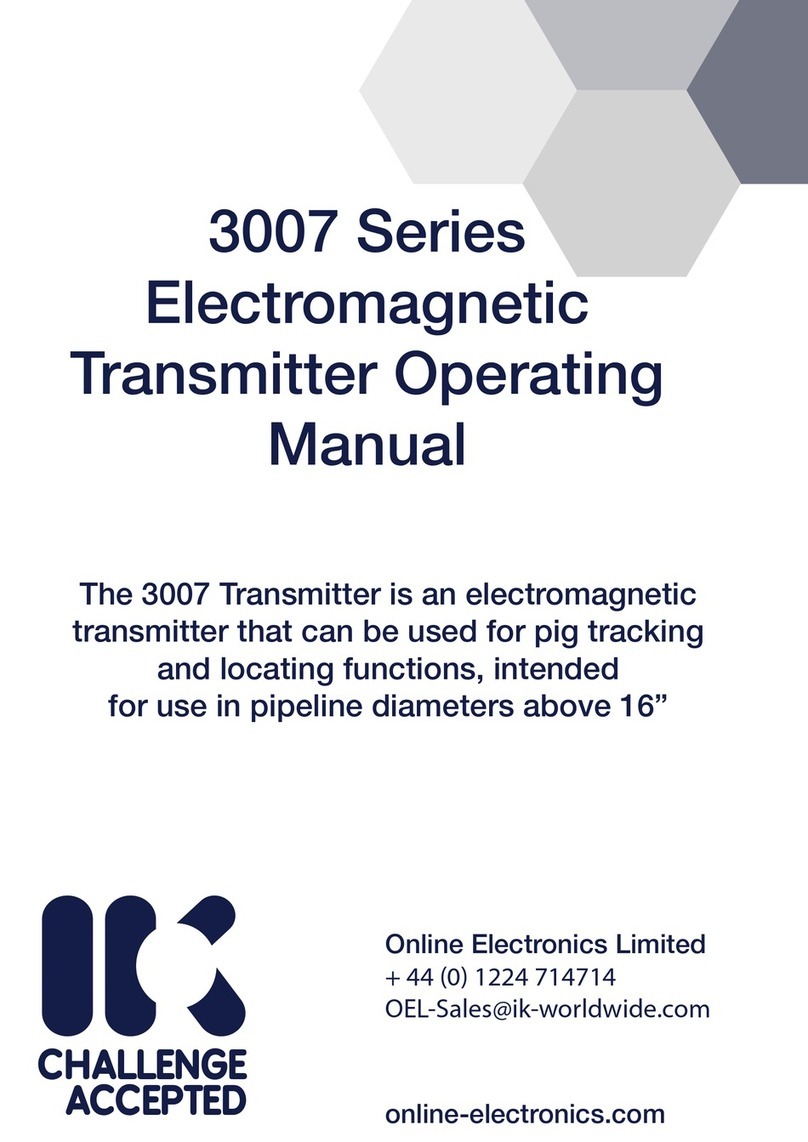ONLINE ELECTRONICS LTD
3014X ATEX EM TRANSMITTER MANUAL RevB00 Page 9 of 16
3.6. INSTALLATION
1. All EM transmitters will induce electrical currents in any conductive materials closely
surrounding them which can result in a severe reduction in signal strength and/or battery
lifetime. This effect can be minimised by reducing the amount of conducting material
surrounding the transmitter. Leave as much of the transmitter exposed as possible. Any
slits or apertures which can be made in the surrounding material will help. Use materials
with as high resistance as possible. Non-conducting materials such as plastics will not
suffer from this effect. EM transmitters must not be surrounded by low resistance metals
such as aluminium (including tubes or mounting clamps) under any circumstances.
2. Any magnetic material surrounding the transmitter will tend to block the EM signal from
the transmitter and reduce the received signal strength outside the pipeline. This effect can
be minimised by reducing the amount of magnetic material surrounding the transmitter.
Leave as much of the transmitter exposed as possible. Any slits or apertures which can be
made in the surrounding material will help. Use materials with as low magnetic
permeability as possible. Non-magnetic materials such as plastics will not suffer from this
effect.
3. The transmitter must be mounted in such a way that no movement or vibration
whatsoever is possible (e.g. clamped). If the transmitter is allowed to rattle and/or vibrate
within the pig then the resultant hammering effect can exceed the bump rating of the
transmitter leading to damage and/or failure. This is particularly important in gas pipelines.
For optimum performance the transmitter should be clamped inside a plastic pig body or
plastic guide discs should be clamped around the transmitter to form a pig. The advantage of
these methods is the fact that there is no metal around the transmitter apart from the pipeline
itself. Two alternative mounting arrangements are shown below. The first uses several lengths
of threaded studding to clamp the transmitter between two plates. The second uses a clamping
disc. The advantage of these arrangements is that they have limited amounts of metal around
the transmitter and will therefore have limited effect on the transmitter performance. Please
contact Online Electronics for further information and guidelines regarding EM transmitter
mounting and installation.
The table below shows the typical characteristics of several potential pig and mounting
materials with the best choice at the top, and the worst choice at the bottom. 316 stainless
steel provides a good balance of properties and cost. An aluminium alloy would be a very poor
choice because of the very low resistivity and should not be used under any circumstances.




























